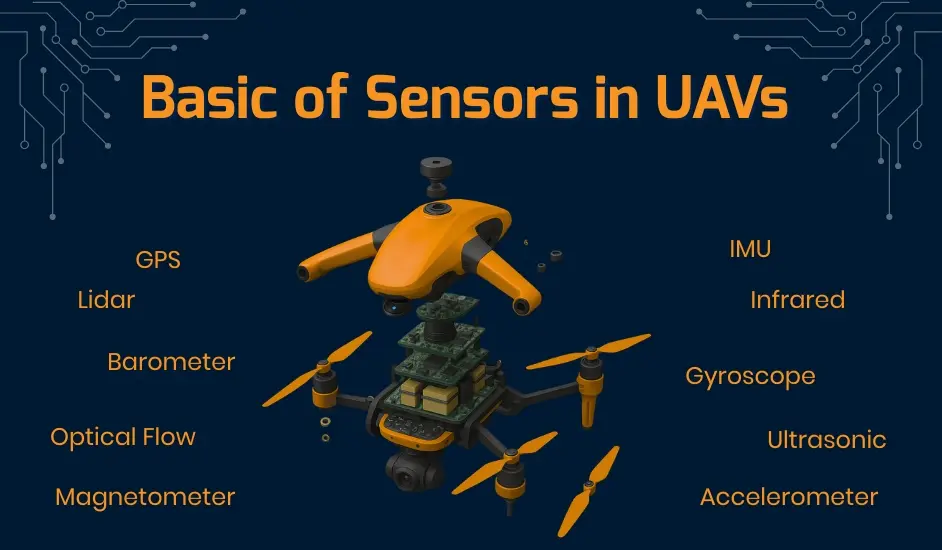Inertial Measurement Unit (IMU)
An Inertial Measurement Unit (IMU) is one of the most critical sensors for quadcopters, providing the essential data needed to maintain stability and orientation. It typically consists of three main components:
- Accelerometer: Measures linear acceleration along three axes (X, Y, Z). This data is crucial for determining the UAV’s movement in a 3D space.
- Gyroscope: Measures angular velocity, which provides the rate of rotation around the three axes. This information helps in calculating the orientation of the UAV.
- Magnetometer: Measures the magnetic field to provide a reference for the UAV’s heading. This sensor is particularly useful for compass-based navigation and reducing drift in directional data.
The IMU outputs raw data, which is processed by the flight controller to determine the UAV’s attitude (pitch, roll, yaw) and movement. Without the IMU, a quadcopter would lack the ability to stabilize itself, making controlled flight impossible.
Additional Sensors for Enhanced Autonomy
To achieve autonomous operation, a quadcopter integrates various sensors beyond the IMU:
- Lidar (Light Detection and Ranging): Lidar uses laser pulses to measure distances with high precision. It creates 3D maps of the environment, enabling the UAV to navigate through complex terrains and avoid obstacles.
- Ultrasonic Sensors: These sensors emit sound waves and measure the time it takes for the echo to return, providing proximity information. Ultrasonic sensors are often used for low-altitude operations and obstacle detection in confined spaces.
- Optical Flow Sensors: These sensors use visual data from a downward-facing camera to estimate the UAV’s motion relative to the ground. They are particularly useful for stable hovering and low-speed navigation where GPS signals may be weak or unavailable.
Each sensor contributes unique data that enhances the quadcopter’s ability to perform tasks autonomously. However, integrating these sensors effectively requires robust calibration and data fusion techniques.


